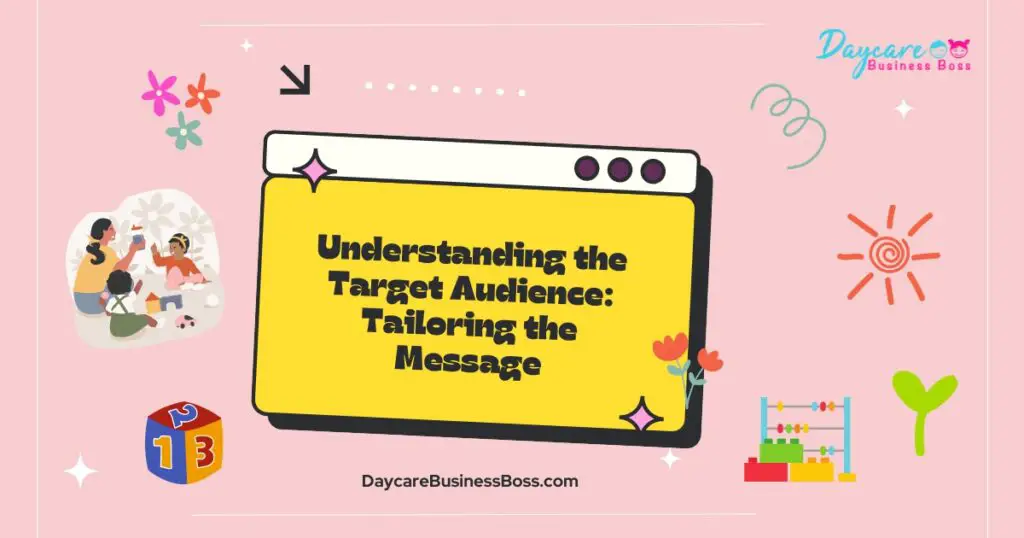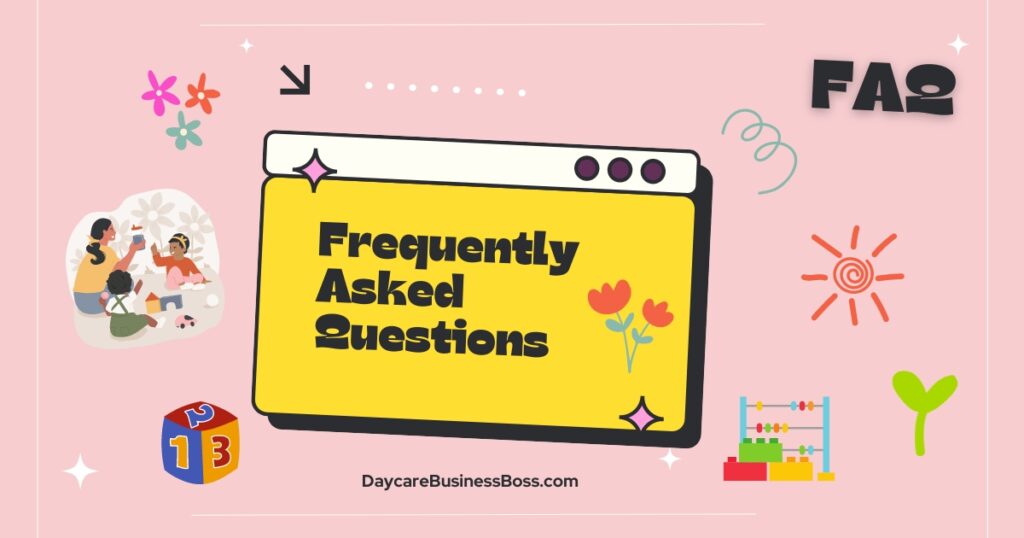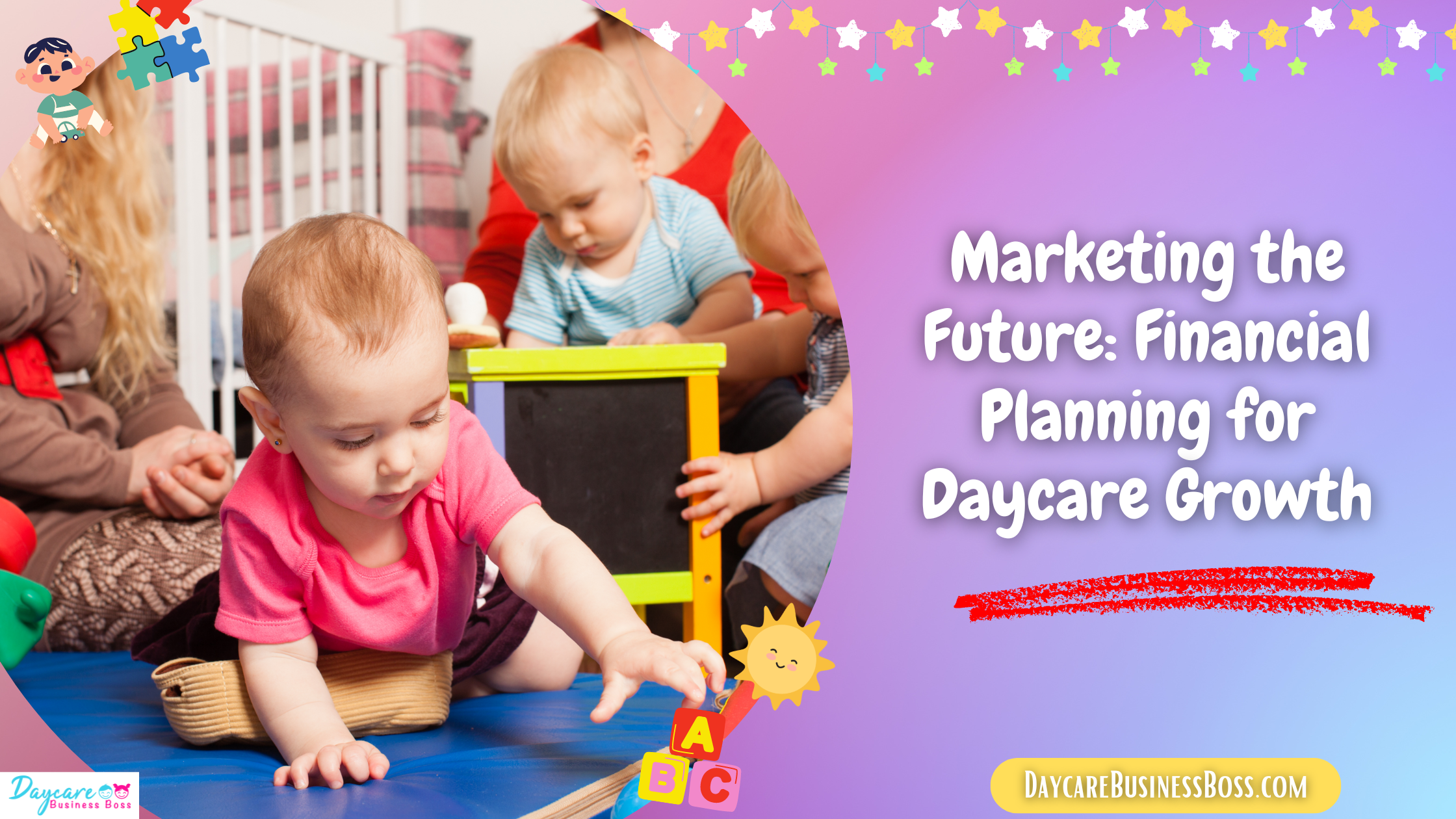Effective marketing becomes a cornerstone of achievement in the fast-paced world of business, where competition is severe and consumer choices are plentiful. This is true even in areas that appear to be far distant from the competitive world of business, such as daycare centers. While daycare aims to nurture and care for children, the fact is that attracting families and sustaining the business requires a well-thought-out marketing approach. One of the most important decisions in this regard is deciding on a suitable marketing budget.
The most useful approach to a daycare’s marketing budget involves location, competition, target audience, and goals. Costs include online ads, social media, events, and referrals. While some daycares opt to allocate 2-5% of their projected revenue, the precise figures can vary significantly based on the unique circumstances of the business.
Location: A Fundamental Building Block
The oft-repeated adage “location, location, location” extends its significance beyond the bounds of real estate endeavors in the dynamic world of marketing. Instead, it emerges as a critical feature in influencing daycare marketing tactics and budget allocations. The geographical environment in which a daycare works has the potential to have a significant impact on its trajectory. The interaction of the daycare’s surroundings, neighborhood demographics, economic backdrop, and accessibility creates a complex tapestry of factors that govern its marketing efforts.
The location of daycare is more than simply a dot on a map; it’s a strategic anchor that influences a slew of decisions. Understanding the composition of the local population provides a compass for adapting marketing efforts in the context of neighborhood demographics. The messaging that resonates most effectively is guided by the surrounding community’s distinct qualities, preferences, and requirements. The area’s economic situation is critical in defining the appropriate pricing tactics and incentives to attract parents looking for childcare services.
Accessibility emerges as a critical component in the equation, impacting how families interact with daycare. A daycare strategically positioned to serve a working population may require extended operating hours, emphasizing flexible enrollment options and smooth communication channels. A daycare in a residential enclave, on the other hand, may capitalize on its proximity to residential centers to generate a sense of proximity and convenience.
The marketing landscape for daycares in urban areas takes on a different color. The cosmopolitan setting frequently denotes a tech-savvy audience, tuned in to online interactions and digital platforms. As a result, urban daycares may emphasize aggressive online and social media marketing initiatives. The idea is to communicate with parents through channels that are familiar to them in their everyday lives, generating a continuous line of communication that compliments the urban lifestyle.
Daycares in suburban communities, on the other hand, provide a different set of opportunities. These locations frequently appeal to families looking for more than simply a service; they want a sense of connection and community. This knowledge motivates suburban daycares to use a combination of online efforts and local events. These daycares cater to the intrinsic demands of suburban families by cultivating a presence on digital platforms while also organizing community-centered events.
The location serves as a compass for navigating the competitive terrain in this hunt for positioning. Understanding the local market is critical for finding possible competitors who are also competing for the attention of parents and guardians looking for childcare solutions. With this information, daycares may strategically position themselves to stand out from the crowd. The subtleties of their services, the quality of care, and their unique selling factors can be highlighted precisely, distinguishing them from the competition.
As a result, marketing budget allocation takes on a new dimension. Resources are directed toward efforts that accentuate the daycare’s unique strengths, utilizing location-based analytics to develop meaningful advertising. Whether promoting technology integration in urban settings or cultivating a sense of belonging in suburban settings, the budget allocation is consistent with the daycare’s strategic goals.
Read more about: Building Blocks Package
Navigating the Competitive Landscape
Competition is an unavoidable force in the delicate tapestry of the economic world, and the area of daycare services is no exception. Daycares have difficulty differentiating themselves as discerning parents carefully assess their options. A big marketing budget emerges as a powerful instrument in this field, having the ability to raise a daycare from background noise to a distinct voice that connects with its audience. The foundation of this attempt is a thorough examination of the competition—an investigation that reveals insights into their strengths, weaknesses, and strategic approaches. Armed with this arsenal of knowledge, a daycare can ingeniously carve out its niche by emphasizing features that appeal to its target audience.
Competitive analysis reveals a treasure trove of information, revealing the distinguishing characteristics that distinguish competitors. Armed with these insights, a daycare can strategically position itself by emphasizing its distinguishing features. This could include things like outstanding instructional techniques, novel safety measures, or specialized programs that cater to specific requirements. The daycare provides a foundation for strong connections by resonating with parents who share similar values.
The investment in competitive analysis serves as a springboard for resource allocation, directing cash to areas that balance or outperform the competition’s strengths. For example, if a competitor daycare has established a strong online presence with a broad digital reach, a daycare can respond by allocating a major amount of its marketing budget to digital initiatives. This could imply launching a thorough search engine optimization (SEO) effort to ensure that the daycare’s website and content rank high in online searches. Pay-per-click (PPC) advertising can also be used to catch the attention of parents who are actively looking for childcare options on the Internet.
If the daycare’s unique selling point is its hands-on, customized approach to childcare, an alternative strategy may emerge. The budget could be used to conduct entertaining and educational activities, such as open houses or workshops that highlight the philosophy and facilities of the daycare. These encounters provide parents looking for a nurturing environment for their children with practical experience. Such events not only serve as a showcase for the daycare’s skills but also develop a sense of community trust and connection.
Understanding the Target Audience: Tailoring the Message

The resonance of messaging with its intended audience—parents and guardians—is the underpinning of growth in childcare marketing. Even the most well-crafted marketing initiatives might fall flat without this resonance. To achieve this balance, a thorough grasp of the demographic’s needs, preferences, and pain areas is essential. Creating a message that truly resonates is dependent on your ability to empathize with your audience and respond to their hopes and fears. A budget that is a direct reflection of this fundamental understanding is a powerful recipe for achieving positive results.
The trip into the audience’s world begins with a rigorous exploration that reveals their desires, aspirations, and obstacles. This immersion enables daycares to craft extremely personal marketing tactics. The construction of comprehensive buyer personas—imaginative representations of the daycare’s ideal clients—is a helpful tool in this attempt. These personalities act as portals into the lives of parents and guardians, shining light on the complexities of their daily routines, hopes, and fears.
Building these identities entails delving into the domain of psychographics, and deciphering the emotional tapestry that drives decision-making. For example, if the daycare’s target audience is primarily made up of working parents with demanding schedules, the advertising can revolve around themes of ease and flexibility. The funds are then precisely allocated to web marketing that highlight extended working hours, quicker enrollment processes, and possibly even the provision of after-school programs. This not only talks directly to the issues these parents confront, but it also promotes the daycare as a solution that fits their needs well.
The method is similar to putting together puzzle pieces. Each persona provides a new depth to the overall picture, informing methods that are sensitive to audience nuances. In this scenario, the budget becomes a physical manifestation of this understanding. Daycares can develop meaningful connections by investing resources in channels that resonate most effectively, such as online marketing that capitalize on the convenience aspect or social media content that highlights the daycare’s flexibility.
Aligning with Business Goals: A Pragmatic Approach
The daycare’s internal aims and objectives come into play as the threads of location, competition, and target audience are weaved together to build the marketing landscape. These objectives, like the North Star directing a journey, serve as the foundation around which the marketing budget is methodically built. Each daycare has a unique mission, whether it is to attain a specific enrollment goal, grow its presence to a new location, or consolidate its image as a reliable and great childcare provider. In effect, the budget is more than just a financial tool; it becomes a living embodiment of these goals, with resources carefully diverted into projects that have the potential to directly contribute to their realization.
The process starts with a pragmatic perspective, based on the idea that every dollar spent should be aligned with the larger business goals. In this quest, the concept of key performance indicators (KPIs) develops as a useful tool. These carefully chosen and adapted KPIs act as navigational lights, ensuring that each step taken is a step toward accomplishing the daycare’s objective. They serve as a link between big ambitions and tactical implementation.
These indicators differ depending on the goals of the childcare. For example, if the overall goal is to increase enrollment by a certain percentage, the KPIs could include data like website traffic, lead conversions, event attendance, and referral rates. Each of these measures provides insight into the efficacy of the marketing methods used. As a result, a sizable portion of the marketing budget may be devoted to lead-generation initiatives that target prospective parents via internet ads and social media promotion. This targeted strategy not only directs traffic to the enrollment page but also corresponds with the desired goal.
As a result, resource distribution is not a spontaneous decision, but rather a deliberate one choreographed with precision. It entails the purposeful allocation of funding to methods that can cause a ripple effect, beginning with the initial touchpoints and ending with the desired conversions. As a result, there is a synergy between the daycare’s ideals and the financial blueprint, with each expense serving as an investment in moving the institution closer to its objectives.
Read more about: Kiddie Connections: Daycare Marketing Programs for Building Bonds
Costs and Allocation: Crafting a Financial Blueprint
As the cliché goes, “money makes the world go round,” and budgeting is the mechanism that keeps the wheels going in the world of marketing. The costs of marketing a daycare vary, ranging from digital initiatives to more traditional methods.
Daycares are no exception to the importance of online advertising in modern marketing. Allocating a portion of the cash to platforms like Google marketing and social media marketing might help the daycare become more visible to its target demographic. These outlets, with the capacity to target certain demographics and places, provide a cost-effective way to contact potential clients.
Social networking is more than just a way to remain in touch with pals; it’s also an effective marketing tool. Creating compelling information that appeals to parents can help to build connections and trust. Social media can help promote brand loyalty by posting achievement stories, parental recommendations, or showing the daycare’s amenities. While the financial investment in social media may not be as significant as in other channels, it does necessitate regular work and ingenuity.
Events give an essential chance for direct community participation. Open houses, workshops, and themed events allow parents to have a personal look at the daycare’s atmosphere and attitude. Allocating expenditures for event preparation, decor, and advertising materials provides a smooth and memorable event.
Referrals are proof of a daycare’s quality and reputation. Referral programs can be used to incentivize pleased parents to refer friends and family members. Allocating a percentage of the budget to rewards for referrals not only capitalizes on the power of word-of-mouth marketing but also recognizes and honors loyal customers.
Frequently Asked Questions

Why is a daycare’s location significant when choosing its marketing budget?
A daycare’s location is an important component that determines its marketing strategy and budget allocation. The demographics, economic position, and accessibility of the surrounding area all play a significant part in creating the marketing strategy. A preschool in a city, for example, would emphasize online and social media marketing to reach a tech-savvy audience. A daycare in a suburban town, on the other hand, could profit from a combination of internet activities and local events to appeal to families wanting a feeling of community and convenience. Analyzing location assists in identifying competitors and effectively placing the daycare, hence influencing budget allocation.
How does understanding the target audience affect the marketing budget of a daycare?
Understanding the target demographic, which is often parents and guardians looking for childcare services, is critical for developing an effective marketing message. A daycare can design its marketing strategy to resonate with this group by understanding its requirements, preferences, and challenges. Daycares can imagine the demands of their customers by creating thorough buyer personas—a portrayal of ideal clientele. This insight drives marketing budget allocation toward techniques that address the audience’s pain areas. If the target audience consists of busy working parents, for example, resources may be directed to online marketing stressing extended operating hours or simple enrollment processes.
How should a daycare’s marketing budget be aligned with company objectives?
Aligning a daycare’s marketing budget with business objectives entails creating key performance indicators (KPIs) that represent the daycare’s aims. Whether the goal is to grow enrollment, expand to a new site, or improve reputation, the budget should support projects that contribute directly to these goals. For example, if increasing enrollment is the primary goal, a considerable percentage of the money may be invested in lead generation activities, such as online marketing and social media promotion. KPIs direct resource allocation toward results-driven plans and enable a pragmatic approach to budgeting.
To learn more on how to start your own daycare checkout my startup documents here.
The information provided by DaycareBusinessBoss.com (“The Site”) is for general informational purposes only. All information on the Site is provided in good faith, however, we make no representation or warranty of any kind, express or implied, regarding the accuracy, adequacy, validity, reliability, availability or completeness of any information on the Site. Under no circumstance shall we have any liability to you for any loss or damage of any kind incurred as a result of the use of the Site or Reliance on any information provided on the Site. Your use of the Site and your reliance on any information on the Site is solely at your own risk.
This blog post is for educational purposes only and does not constitute legal advice. Please consult a legal expert to address your specific needs. Terms and Conditions. (https://daycarebusinessboss.com/terms-conditions/)

Meet Shawn Chun: Entrepreneur and Childcare Business Fan.
I’m a happy individual who happens to be an entrepreneur. I have owned several types of businesses in my life from a coffee shop to an import and export business to an online review business plus a few more and now I create online daycare business resources for those interested in starting new ventures. It’s demanding work but I love it. I do it for those passionate about their business and their goals. That’s why when I meet a childcare business owner, I see myself. I know how hard the struggle is to retain clients, find good employees and keep the business growing all while trying to stay competitive.
That’s why I created Daycare Business Boss: I want to help childcare business owners like you build a thriving business that brings you endless joy and supports your ideal lifestyle.

